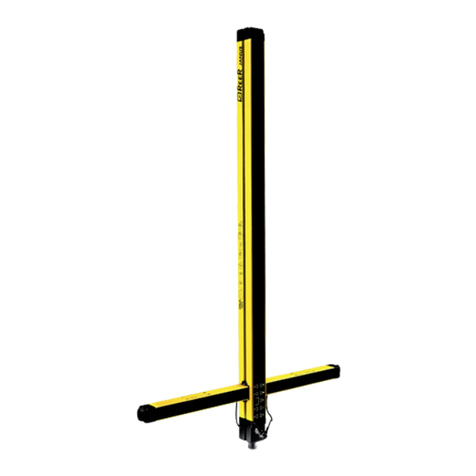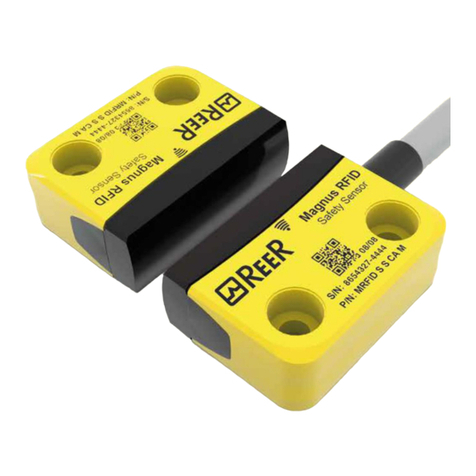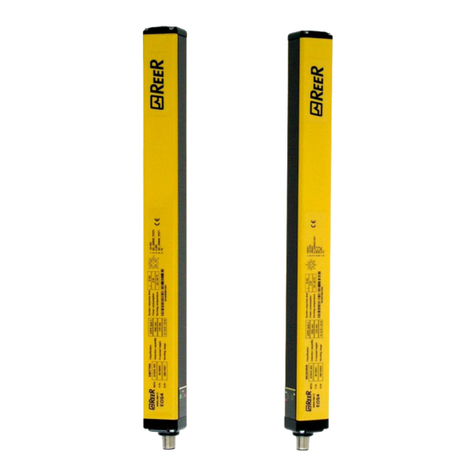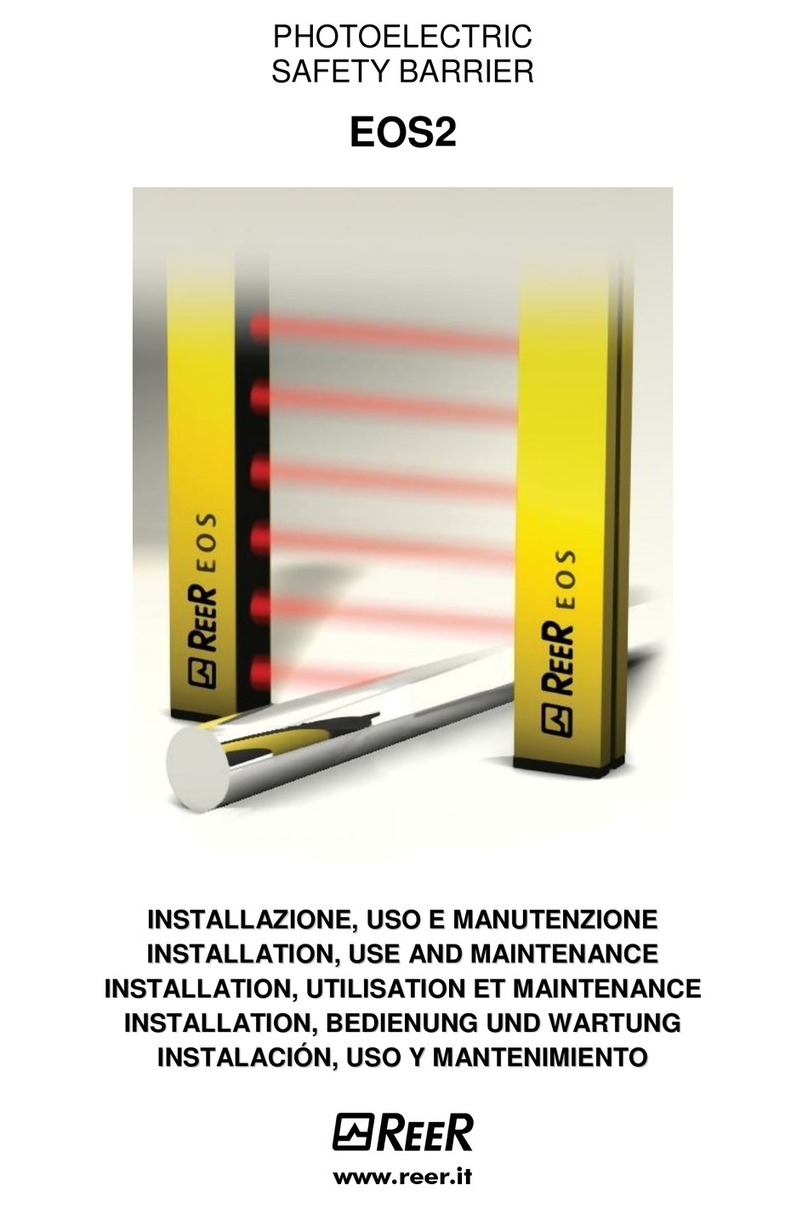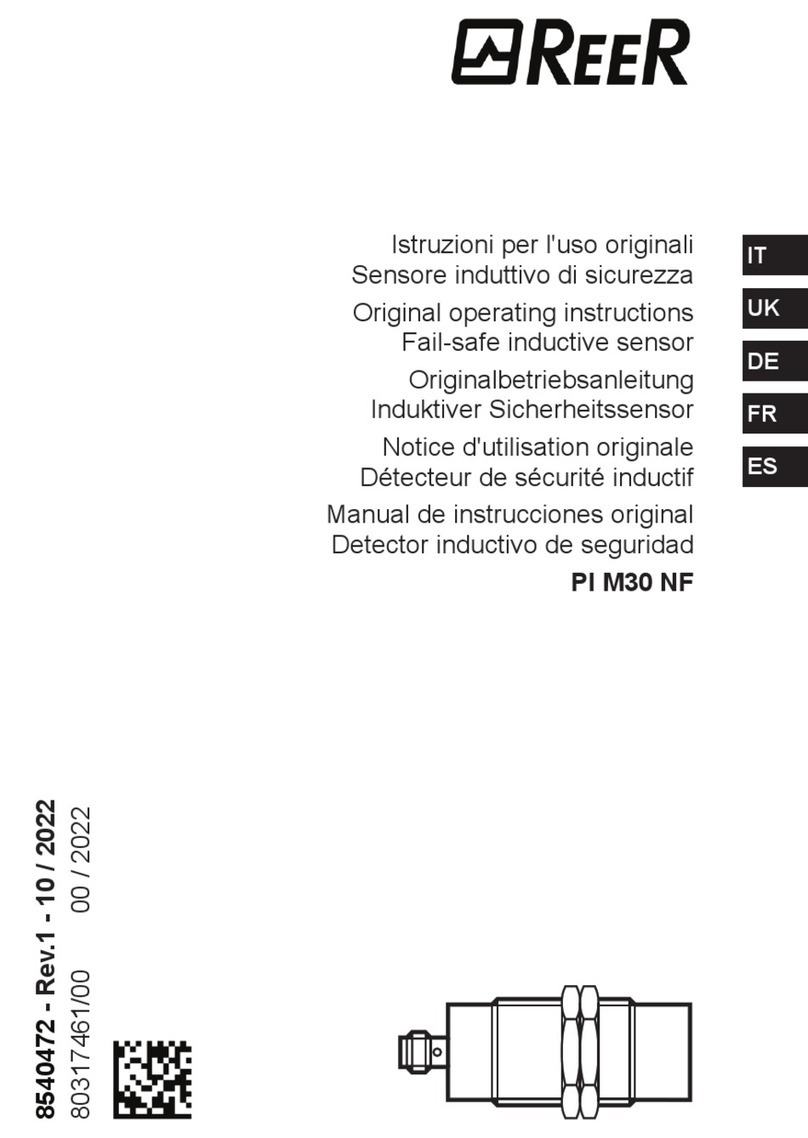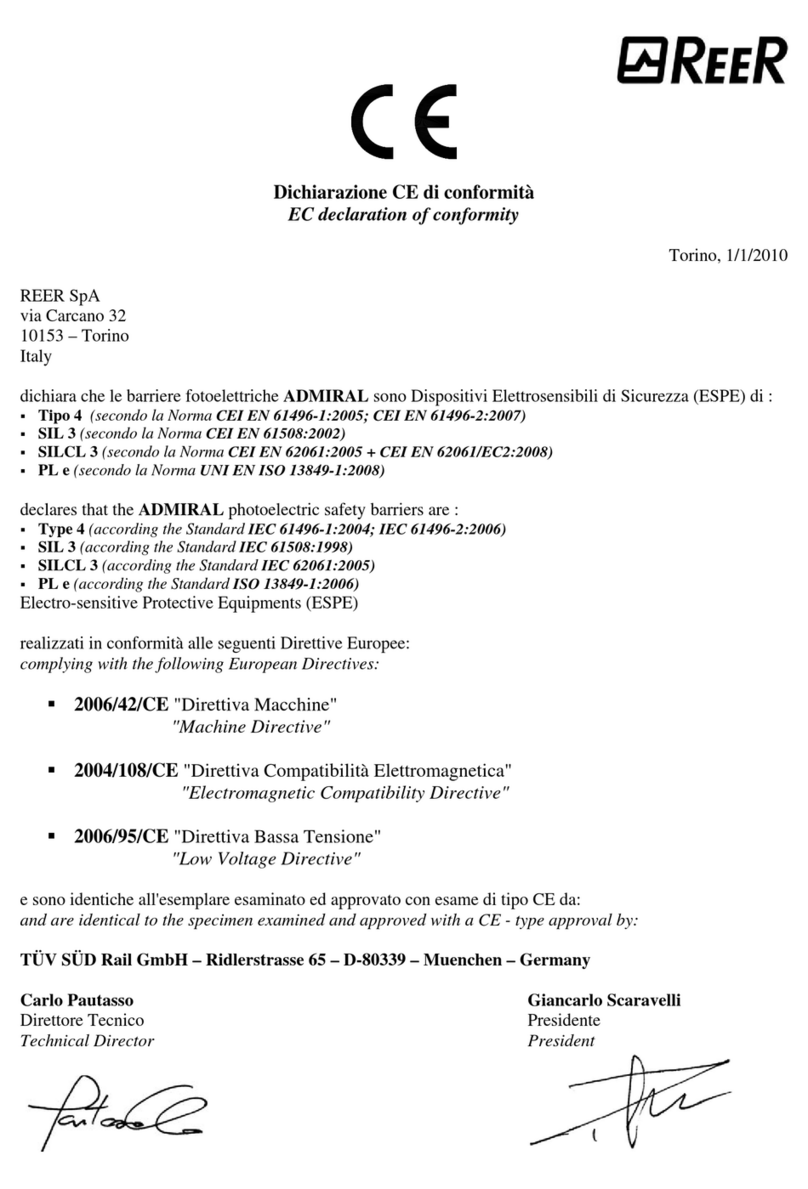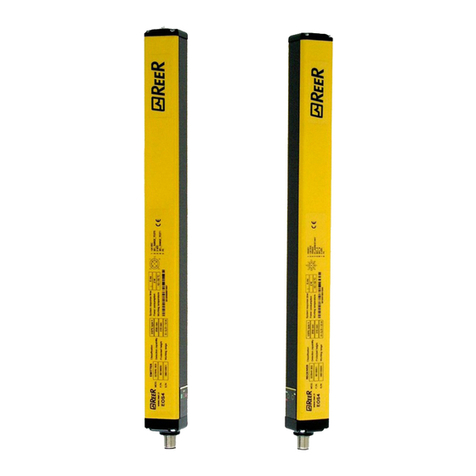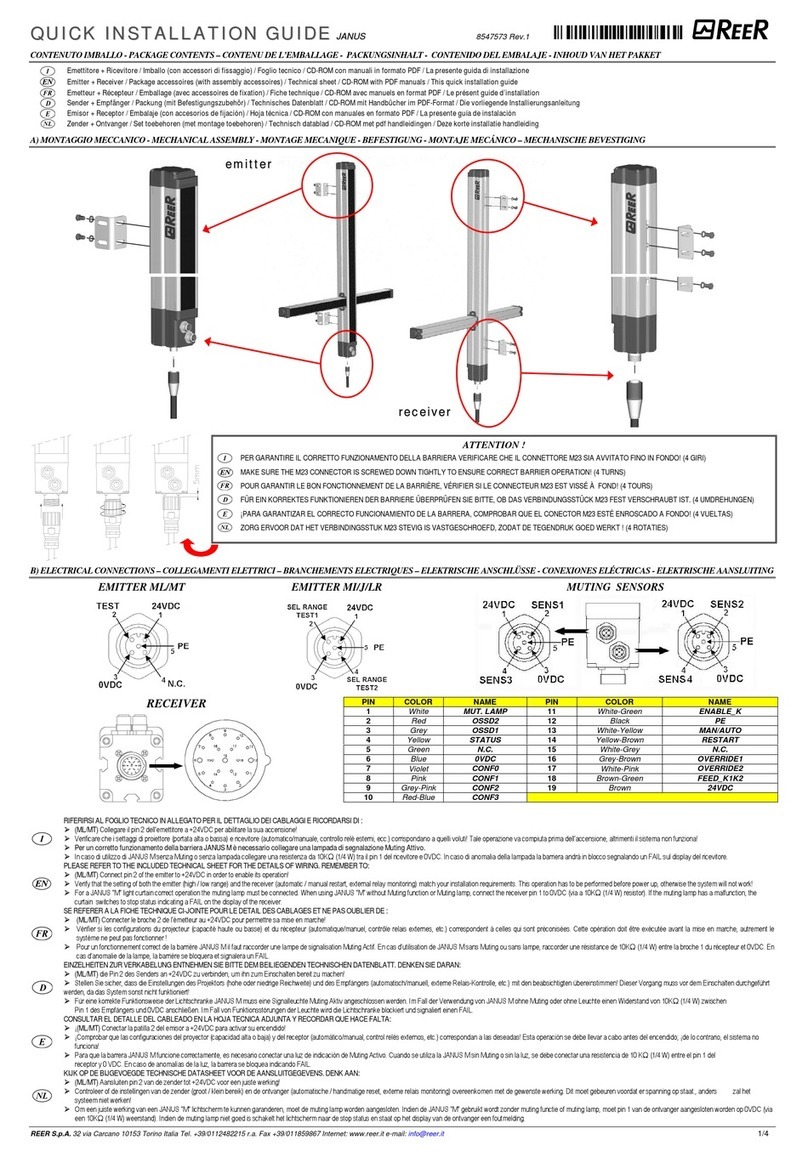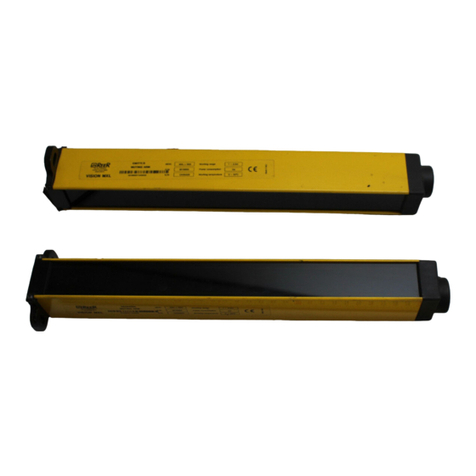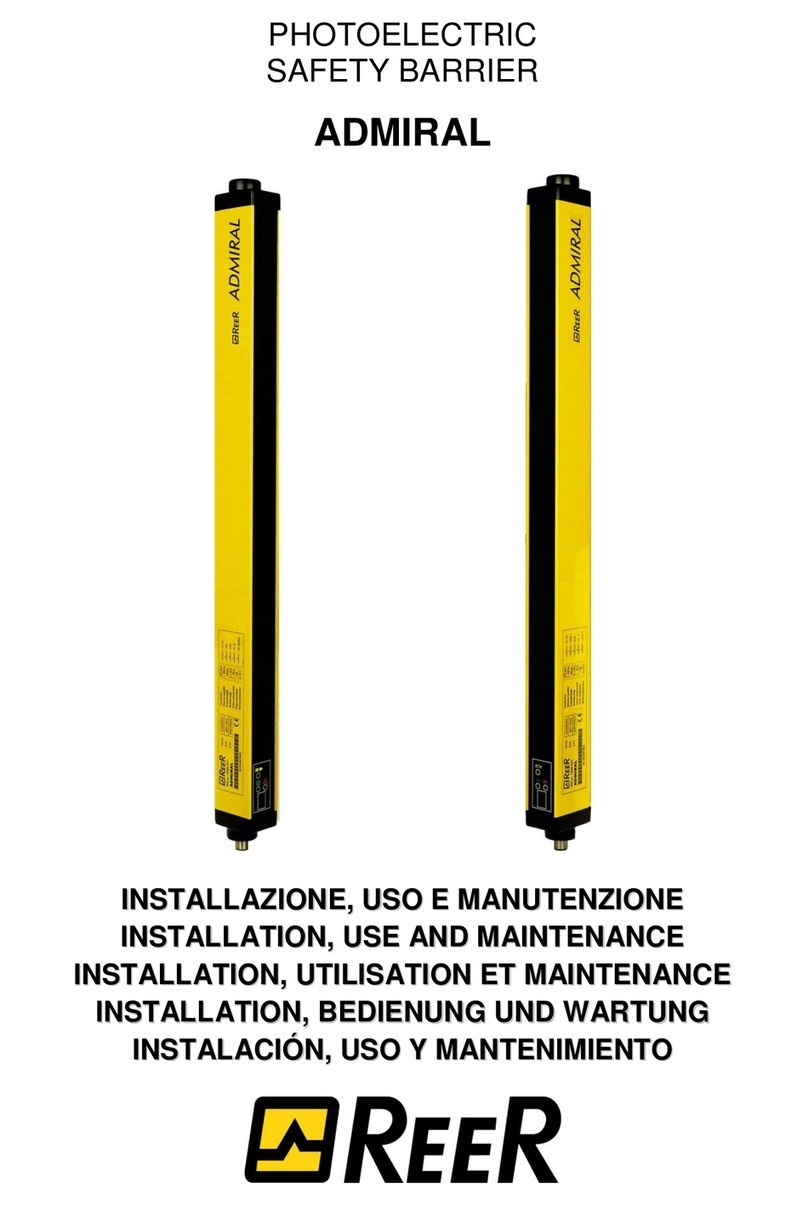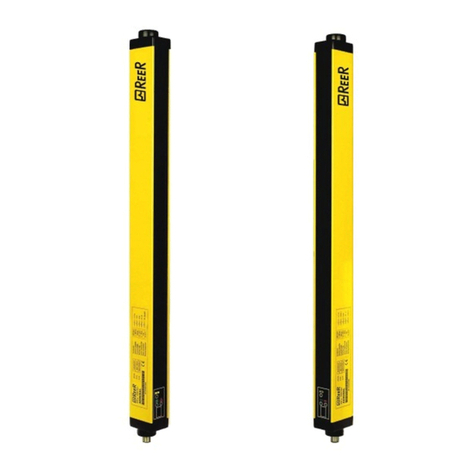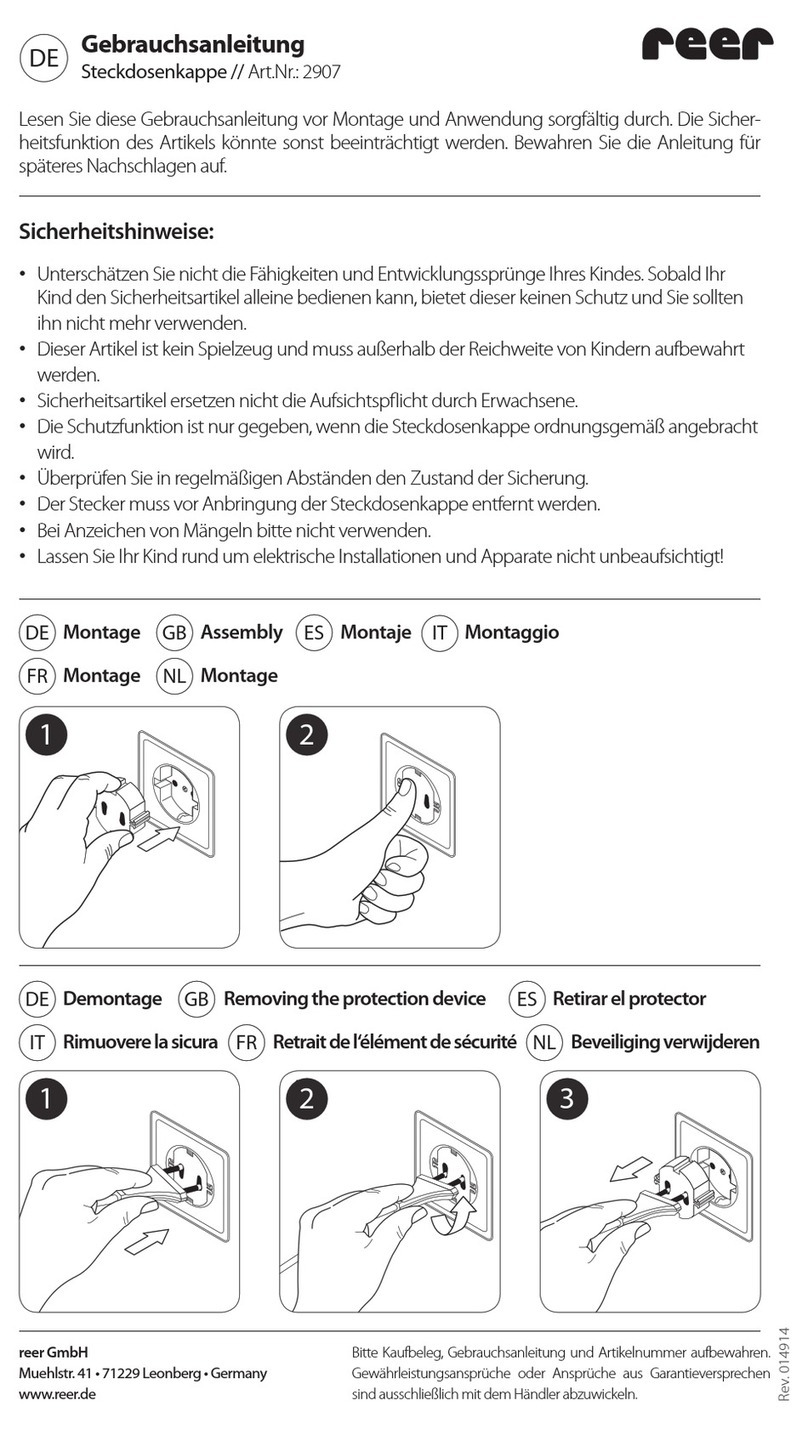8540488 • 21/03/2016 • Rev.13 5
INSTALLATION
Before installing the VISION safety system, make sure that:
The safety system is only used as a stopping device and not as a machine control
device.
The machine control can be actuated electrically.
All dangerous machine movements can be interrupted immediately. In particular, the
machine stopping times must be known and, if necessary, measured.
The machine does not generate dangerous situations due to materials projecting or
falling from overhead; if that is not the case, additional mechanical guards must be
installed.
The minimum dimensions of the object that must be intercepted are greater than or
equal to the resolution of the specific model.
Knowledge of the shape and dimensions of the dangerous area enables the width and height
of the relative access area to be calculated.
Compare these dimensions with the maximum working range and the height of the
protected area in relation to the specific model.
The general instructions set out below must be taken into consideration before placing the
safety device in position.
Make sure that the temperature of the environment in which the system is to be
installed is compatible with the temperature parameters contained in the technical
data sheet.
Do not install the Emitter and Receiver close to bright or high-intensity flashing light
sources.
Certain environmental conditions may affect the monitoring capacity of the
photoelectric devices. In order to assure correct operation of equipment in places
that may be subject to fog, rain, smoke or dust, the appropriate correction factors Cf
should be applied to the maximum working range values. In these cases:
where Pu and Pm are, respectively, the working and maximum range in meters.
